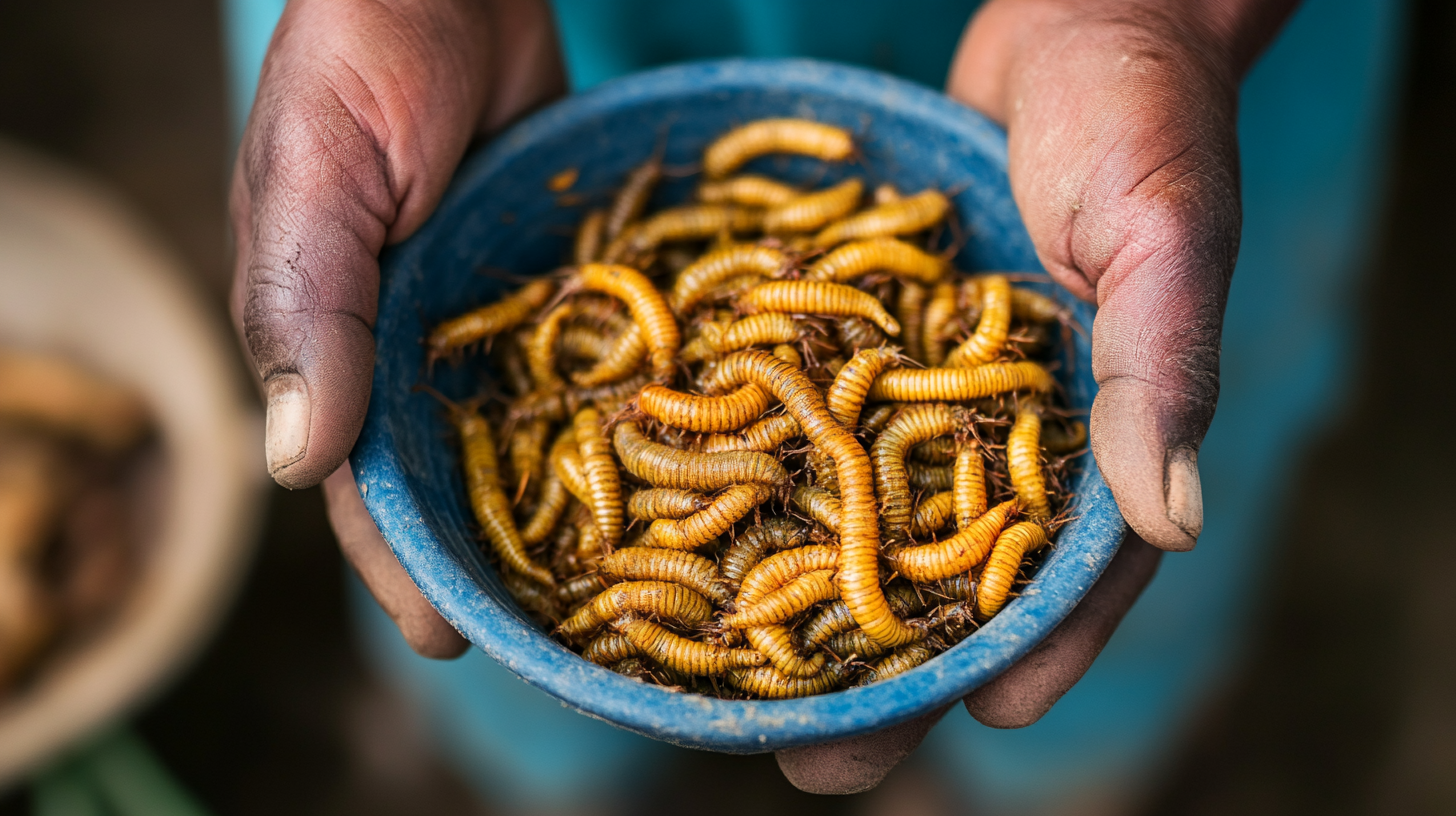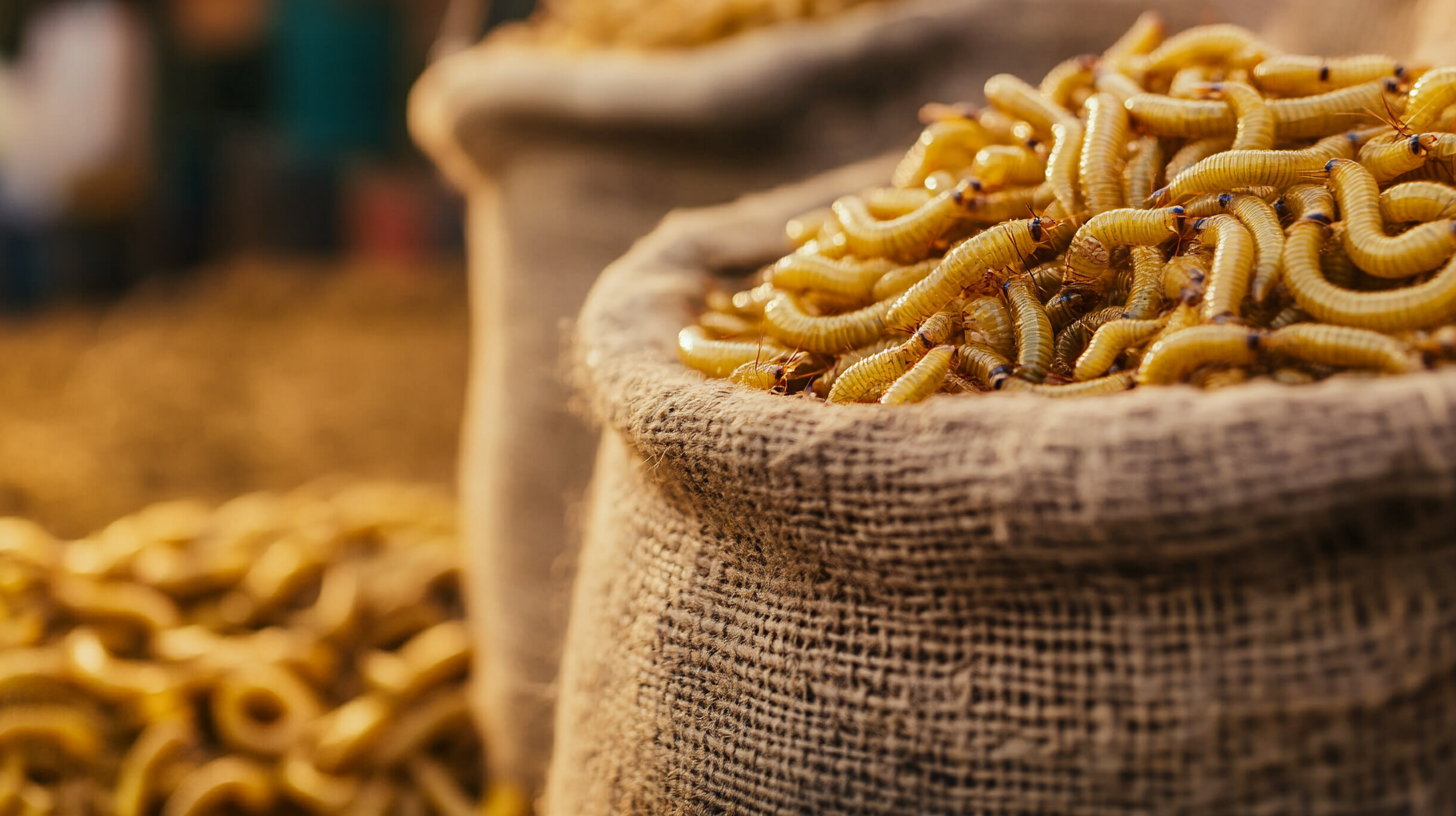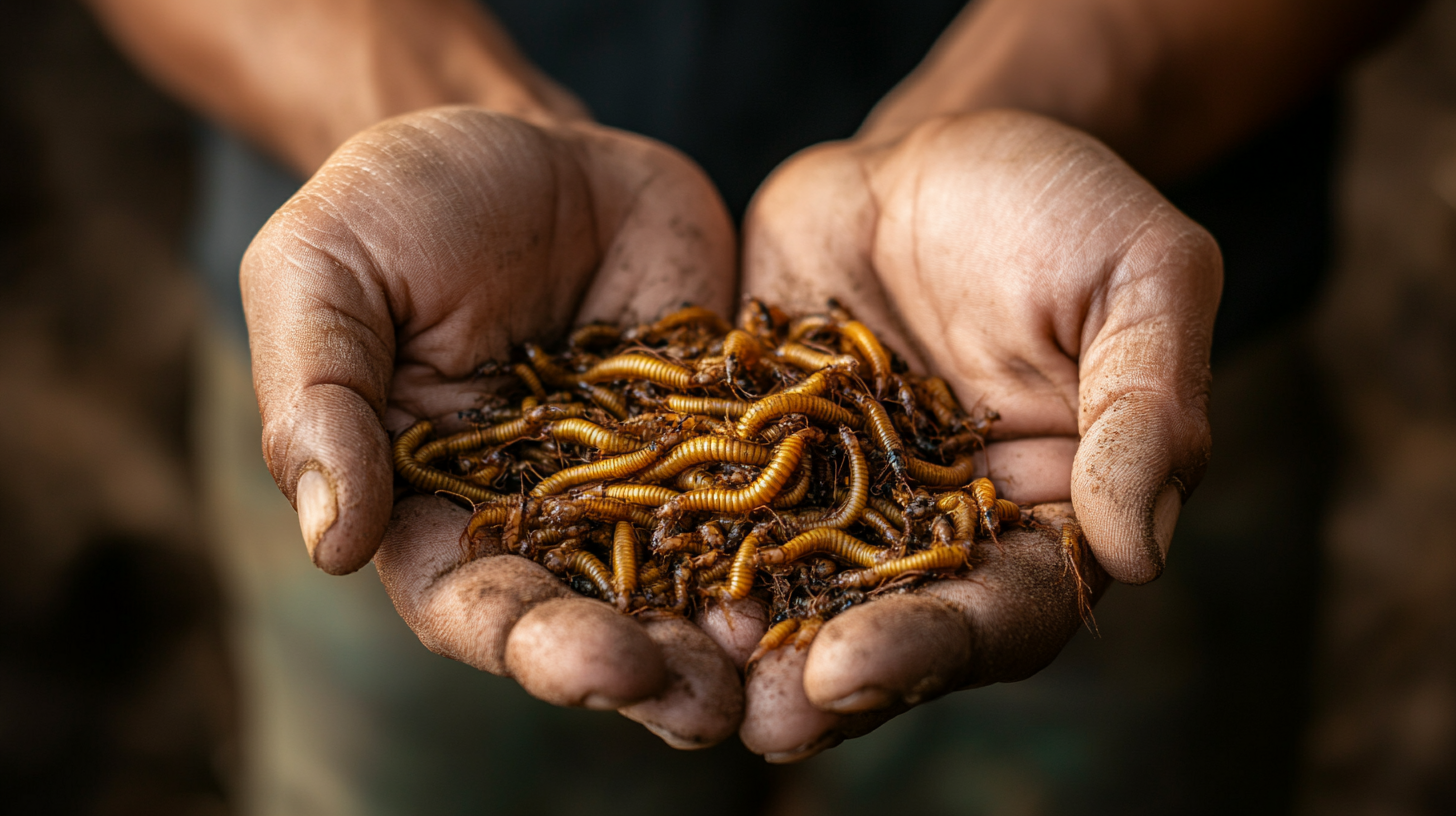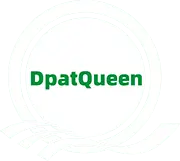As the demand for sustainable protein sources continues to rise, dried meal worms are emerging as a viable alternative for both human consumption and animal feed. According to a recent report from the Food and Agriculture Organization (FAO), edible insects, including dried meal worms, could play a crucial role in addressing global food security by providing a nutritious and environmentally friendly protein source. The global edible insect market is expected to reach a staggering USD 8 billion by 2025, with dried meal worms accounting for a significant portion of this growth.
Sourcing dried meal worms globally presents unique challenges and opportunities for businesses looking to tap into this burgeoning market. Research from market analysts indicates that consumer preferences are shifting towards sustainable dietary choices, with insects being recognized for their high protein content and low environmental impact. Furthermore, the increasing adoption of insect-based products in various cultures enhances the significance of understanding local sourcing practices and regulations. In this blog, we will explore five essential insights to effectively source dried meal worms, ensuring businesses can stay ahead in this rapidly evolving industry.

The demand for dried mealworms is experiencing significant growth across the globe, driven by shifting consumer preferences towards sustainable protein sources. As the world grapples with environmental concerns and a burgeoning population, consumers are increasingly seeking alternatives to traditional livestock. Dried mealworms, rich in protein and essential nutrients, are emerging as a favored option for both human consumption and animal feed, making them a focal point in sustainability discussions.
Market trends indicate a surge in the acceptance of insect-based products, with projections suggesting that the global market for dried mealworms will expand dramatically in the coming years. Regions such as Europe and North America show increased interest, with innovative culinary applications and health-conscious consumers driving this change. Meanwhile, the rise of pet ownership, particularly among millennials and Gen Z, is further propelling the demand for nutritious pet snacks made from dried mealworms.
Investors and businesses looking to tap into this expanding market must understand regional variances in consumer acceptance, dietary restrictions, and regulatory frameworks. As manufacturers launch products catering to both vegans and meat-eaters alike, aligning offerings with consumer demands will be crucial. Moreover, establishing strong supply chains that ensure quality and sustainability can set companies apart in this competitive landscape. The future of dried mealworm sourcing appears bright, with numerous opportunities for those committed to innovation and eco-friendly practices.

When sourcing dried mealworm products globally, understanding the key factors influencing pricing is essential for making informed purchasing decisions. According to a report published by MarketsandMarkets, the global mealworm market is projected to reach USD 1.6 billion by 2025, growing at a CAGR of 24.2%. This significant growth is driven by increasing consumer awareness of sustainable protein sources and the nutritional benefits of mealworms, such as their high protein content (approximately 60-70% dry matter) and essential amino acids.
One of the primary factors affecting the pricing of dried mealworm products is production cost. The process of farming and harvesting mealworms requires investment in infrastructure and technology. The availability of raw materials like organic waste for feed also plays a crucial role, alongside the labor costs associated with cultivation. According to a study by Agrilife Research, optimal farming conditions can reduce production costs by up to 30%, providing a competitive edge to suppliers that can effectively manage their operations.
Moreover, market demand and supply dynamics cannot be overlooked. As consumer interest in alternative protein sources surges, especially in regions like North America and Europe, demand for dried mealworm products escalates. The European market alone is expected to witness a substantial growth rate, which can lead to fluctuations in pricing. Additionally, global trade policies and import tariffs further influence market prices, making it critical for buyers to stay informed about geopolitical conditions and trade agreements impacting the food supply chain.

The rising interest in sustainable food sources has brought dried mealworms to the forefront of global attention. As a nutrient-dense, protein-rich alternative to traditional livestock, mealworms present a compelling case for sustainable agriculture. Their production requires significantly less land, water, and feed compared to conventional animal farming, making them an environmentally friendly option. One of the most striking facts about mealworm farming is its ability to convert organic waste into high-quality protein, effectively closing the loop in the agricultural cycle.
In addition to conservation of resources, the environmental impact of dried mealworm production is compounded by its minimal greenhouse gas emissions. Unlike cattle and pigs, which contribute to extensive methane emissions, mealworms release a fraction of this gas during their life cycle. This characteristic positions mealworm farming as a viable solution to the urgent need for more sustainable protein sources in an era of climate change. Furthermore, these insects are more efficient in converting feed into protein, which not only decreases the pressure on grain crops but also helps in reducing the deforestation caused by agricultural expansion.
Sourcing dried mealworms globally not only taps into this sustainable production method but also supports local economies and encourages biodiversity. By investing in insect farming, businesses can contribute to a circular economy that emphasizes waste reduction, resource efficiency, and ecological balance. As consumers become more aware of their food's environmental footprint, the demand for sustainable products like dried mealworms is likely to increase, promoting a healthier planet for future generations.
| Insight | Description | Sustainability Benefits | Environmental Impact |
|---|---|---|---|
| 1. Nutritional Value | Dried mealworms are rich in protein and essential nutrients. | High protein content with lower resource consumption compared to traditional livestock. | Lower CO2 emissions compared to beef and pork production. |
| 2. Resource Efficiency | Requires less land, water, and feed than traditional animal farming. | More efficient feed conversion rates, leading to better sustainability. | Reduced strain on water resources and land use. |
| 3. Waste Reduction | Can be raised on organic waste products, helping with waste management. | Promotes circular economy by recycling food waste. | Decreases landfills and related greenhouse gas emissions. |
| 4. Adaptability | Can be farmed in various environments and conditions. | Increases food production resilience. | Less vulnerability to climate change impacts. |
| 5. Market Potential | Growing demand for alternative protein sources globally. | Encourages investment in sustainable food solutions. | Supports lower environmental impact food production systems. |
Navigating the regulatory landscape in the sourcing of edible insects, such as dried mealworms, presents unique challenges for businesses aiming to thrive in the global market. Each country has its own set of regulations governing the production, processing, and sale of edible insects, often leading to a complex web of compliance requirements. For instance, the European Union has stringent safety and hygiene standards that must be met for insects to be classified as food products. Understanding these regulatory frameworks is crucial, as non-compliance can not only result in financial losses but also damage to brand reputation.
Furthermore, businesses sourcing mealworms must be mindful of certification processes. Many countries require specific certifications to ensure that insect products are safe for consumption. This involves thorough documentation and adherence to quality control standards, which can vary significantly from one jurisdiction to another. Companies should engage with local regulatory experts to interpret these requirements accurately, ensuring that they meet local and international food safety norms. Additionally, staying updated with regulatory changes is essential, as new laws regarding food safety and nutrition continue to evolve, impacting the edible insect industry.
Lastly, fostering relationships with trustworthy suppliers who understand the regulatory landscape can greatly ease the sourcing process. These suppliers can provide valuable insights and support in navigating compliance issues, making the path smoother for businesses looking to introduce dried mealworms into their product lines. By prioritizing regulatory adherence and partnering with knowledgeable sources, companies can not only elevate their market presence but also contribute to the growing acceptance and demand for edible insects globally.
When sourcing dried mealworm products globally, one critical aspect is the evaluation of quality standards and certifications. The interest in insect protein has surged in recent years, driven by the need for sustainable food sources. According to the Food and Agriculture Organization (FAO), edible insects can provide high-quality protein, and mealworms are among the most readily available options for consumers and manufacturers alike.
International certifications such as ISO 22000 and HACCP are pivotal for ensuring that mealworm products meet food safety standards. These certifications offer a framework for identifying, controlling, and managing food safety risks in production processes, thus enhancing consumer trust. For instance, companies that actively pursue these certifications can gain a competitive edge in a market that is projected to reach USD 1.2 billion by 2025, as reported by Research and Markets.
Additionally, adherence to local regulations is vital for accessing different markets. In the European Union, for example, the Novel Food Regulation requires mealworm products to undergo rigorous safety assessments before being placed on the market. This regulatory landscape emphasizes the importance of sourcing dried mealworm products from suppliers who are not only compliant with international standards but also familiar with the specific requirements of various regions. Collaboration with certified suppliers can streamline the sourcing process, ensuring quality and compliance, and ultimately supporting the growth of the insect protein sector.
This pie chart represents the distribution of quality standards for dried meal worm products sourced globally. The data indicates that 30% of the products are categorized as high quality, 50% as moderate quality, and 20% as low quality.
